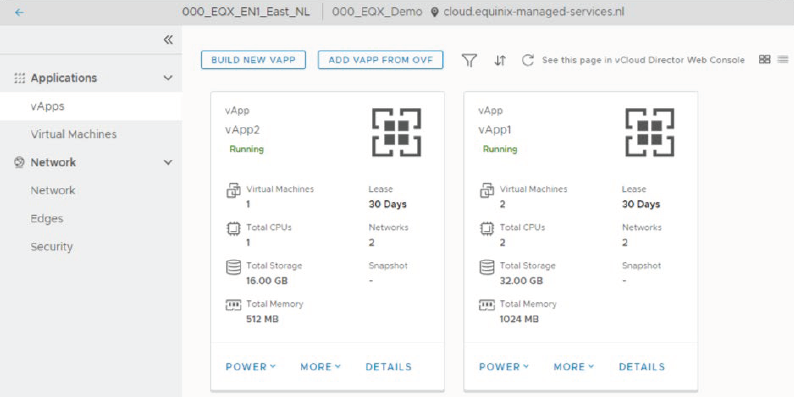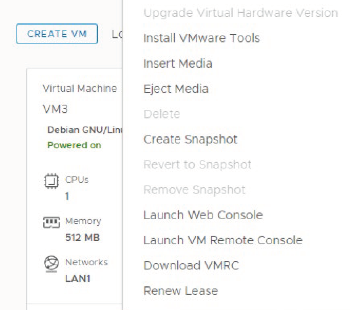EBC Flex Functionalities
When you purchase EBC, you can manage your entire environment through self-service. A distinction is made between administrative matters, such as usage management, email, and alerting, functions for scripting and automation, and functions for managing compute, network, and storage.
The self-service portal serves as a single pane of glass, providing you with all the services for your entire EBC environment, even if they are accessible from different data center locations.
Single Sign-On Access
The self-service portal is accessible via the internet without a VPN and can be accessed through a web interface or an API. Secure access is provided with a standard single sign-on solution.
If you already have your own single sign-on solution, you can use it to register with your company's credentials.
The single sign-on solution gives you access to the EBC self-service portal, and you can set the security at a level suitable for your organization. This allows you to include internal employees in a self-service way or give external users access to the EBC portal with assigned roles.
The single sign-on solution provides the following possibilities:
- Configure password complexity
- Configure external authentication sources
- Set up 2-factor authentication
- Self-service password recovery
- Full control over identities and assigned roles
Federation
The EBC self-service portal is linked to a standard single sign-on solution that provides authentication and authorization facilities by applying federation.
If you have your own authentication and authorization facilities, you can use your own SAML-based federation authentication and authorization, such as Active Directory Federation Service (ADFS) or Azure AD, to access the EBC self-service portal.
Automation and Scripting
You can manage the EBC environment through the web portal or the API. For the API, modules and automation tools such as PowerShell, Python, Ansible, or Terraform are available for scripting. You can request access to the API functionality by creating a ticket with the Equinix Support Desk.
Platform Functionalities
Through the EBC web portal, automation tooling, and the API, you can manage many generic functionalities. Most of these functionalities are available in the web portal in a modern HTML5-based GUI.

The EBC web portal offers the following features:
- Management of virtual EBC data centers within the same or across multiple Equinix data centers
- Creation, import, and management of VMs and vApps
- Scaling VMs up and down
- VM Snapshot
- Console access
- Performance statistics
- Creating and filling a "Library" with your ISO/OVA files
- Direct access to the EBC web portal and VM console via a web browser without complex VPN solutions
- Modern HTML5-based web portal
- Extensive options for scripting & automation
- Separate or group VMs for availability or performance

Virtual Data Centers
Through the self-service portal of EBC, you can own and access one or more Virtual Data Centers (VDCs) within one or more Equinix locations. Reasons for choosing multiple VDCs can include geographically spread locations, disaster recovery, different performance requirements, implementing a reseller model, or separating production and OTA workloads.
Self-Service
Network Functions Virtualization (NFV) features are available through self-service via the EBC web portal and API. Examples of NFV functionalities include firewalling, routing, and VPN.
Through the web portal or automation tooling, you can implement the network configuration that your organization requires. Equinix Solutions Architects can advise you on this if necessary.
vApps
In addition to NFV features for the entire VDC, some features are also available at the vApp level within the VDC.
A vApp is usually used as a collection of VMs that together form an application. It can include a vApp network (including IP segment), making an additional vApp virtual router necessary for inter-vApp traffic. This virtual router provides static routing, NAT, and standard firewall functions to the rest of the VDC. The vApp can be rolled out from a vApp template, so that the application of the application is standardized.
A vApp virtual router is only created when requested by the vApp application configuration, and is not available with a new VDC delivery. This vApp virtual router is automated per vApp network and made available in the Compact size only.
Storage policies
EBC Storage capacity can be purchased in various profiles and policies with their own characteristics. The profile can be selected when creating a VM disk. This profile can be adjusted later if, for example, more performance is desired.
Libraries
In the desired storage profile, you can create one or more libraries in which the most common ISO files can be included. The library can also be used for vApp templates and for uploading your own OVF files.
In addition to its own libraries, you also have access to the Equinix library, where the most frequently used ISO files can be found so you can quickly get to work within its EBC environment The files that you place in the libraries are not included in the EBC back-up service.
Snapshot
VM snapshots can be created in the self-service-portal. Each VM can have a maximum of one snapshot active. When a second snapshot of a VM is created, the first snapshot will be overwritten. We recommend removing snapshots within a day, since they have a negative effect on the performance of VMs and purchased storage capacity. Snapshots older than 7 days will be automatically removed.